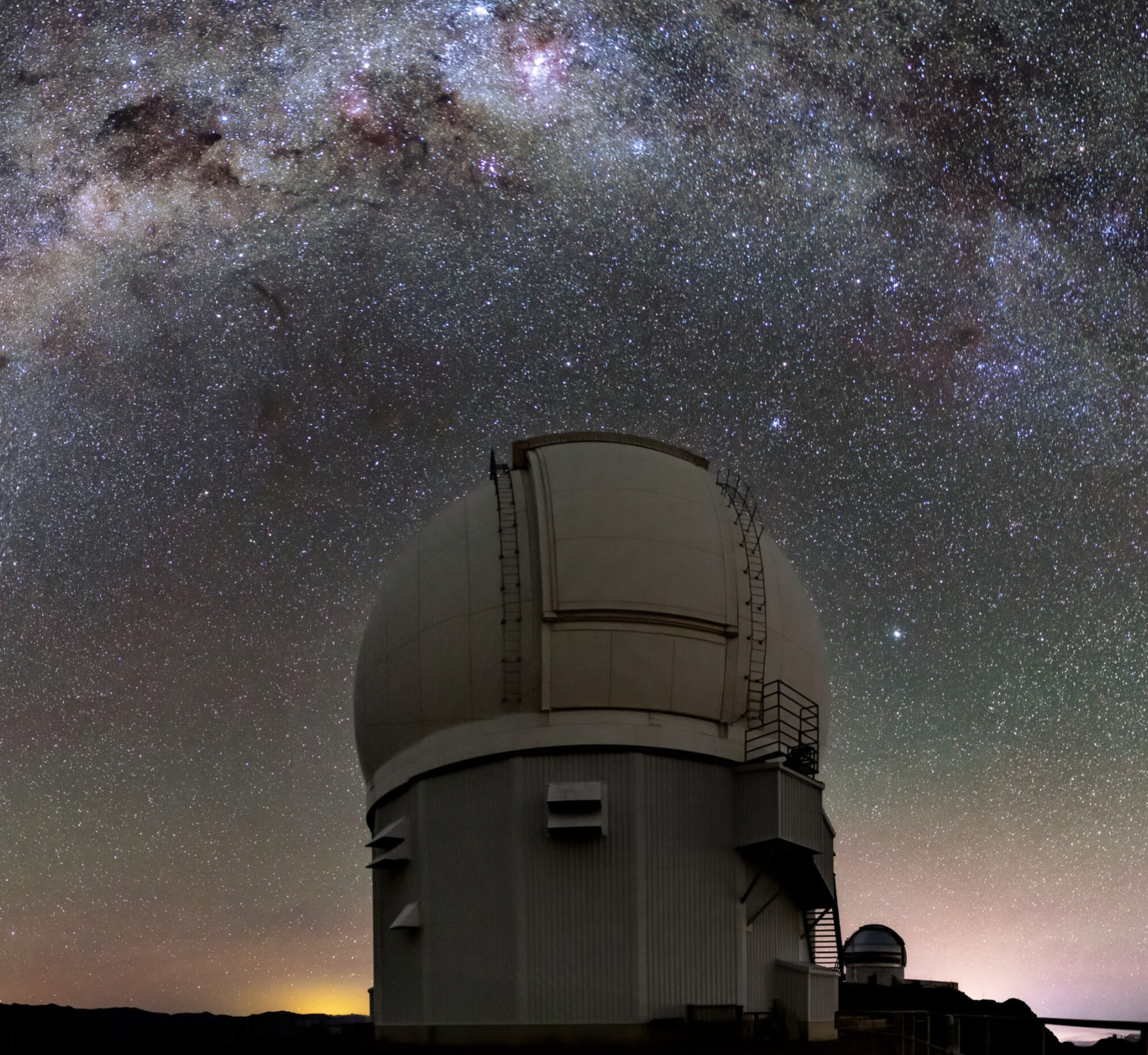The Southern Astrophysical Research (SOAR) telescope
For more information, please visit: https://noirlab.edu/science/observing-noirlab/observing-ctio/observing-soar/aeon

The Southern Astrophysical Research (SOAR) Telescope is a 4.1 meter aperture telescope designed to work from the atmospheric cut-off in the blue (320 nm) to the near infrared, with excellent optical image quality, fast slewing and with a varied suite of instruments always ready for use. SOAR is funded by a a partnership between NSF’s NOIRLab (NSF’s National Optical-Infrared Astronomy Research Laboratory) formerly the U.S. National Optical Astronomy Observatory - NOAO), on behalf of the U.S. National Science Foundation, the Ministério da Ciencia, Tecnologia e Inovaçoes (MCTI) of the Federal Republic of Brazil, the University of North Carolina at Chapel Hill (UNC), and Michigan State University (MSU).
The SOAR telescope is situated on Cerro Pachón - IV Region - Chile, at an altitude of 2,700 meters (8,775 feet) above sea level, co-located on the same summit with the Vera Rubin and the Gemini South Observatories. Our offices are located in the AURA/CTIO compound, in the city of La Serena, Chile. For more information on the technical specifications of the telescope, see this page. SOAR is one of the founding partners of the Astronomical Event Observatory Network (AEON), together with Las Cumbres Observatory and Gemini, and has been running the highly automated SOAR AEON queue regularly since 2019. AEON at SOAR offers AEON-SOAR optical imaging and spectroscopy, and near-IR spectroscopy (out to 2.4 um). Starting in the second half of 2025 we will also be offering near-IR imaging.
In addition to dynamic, programmatically accessible scheduling, AEON on SOAR provides real-time optical imaging and spectroscopic data reduction, which allows our Goodman spectrograph users to get fully reduced data seconds after shutter close. The SOAR AEON queue includes an observation of a spectrophotometric standard star every night. Tspec near-IR spectroscopy in AEON mode include a Telluric standard observed immediately after the science target. Users can use the LCO Observation Portal or an API to submit targets. All raw and reduced SOAR data are uploaded to the Las Cumbres data archive, from where users can download their data products.
For more information on AEON at SOAR, please see our web pages at this link.